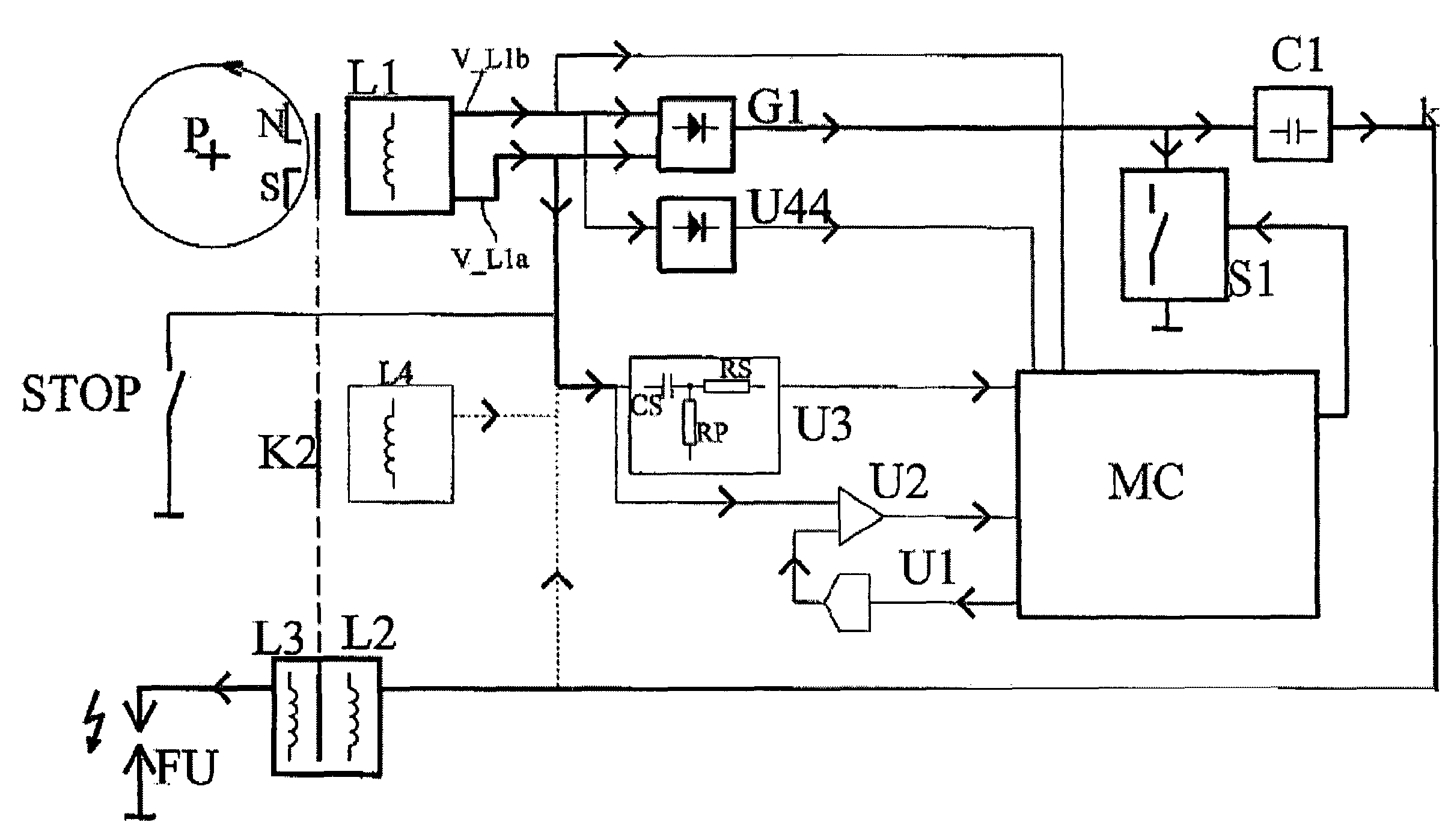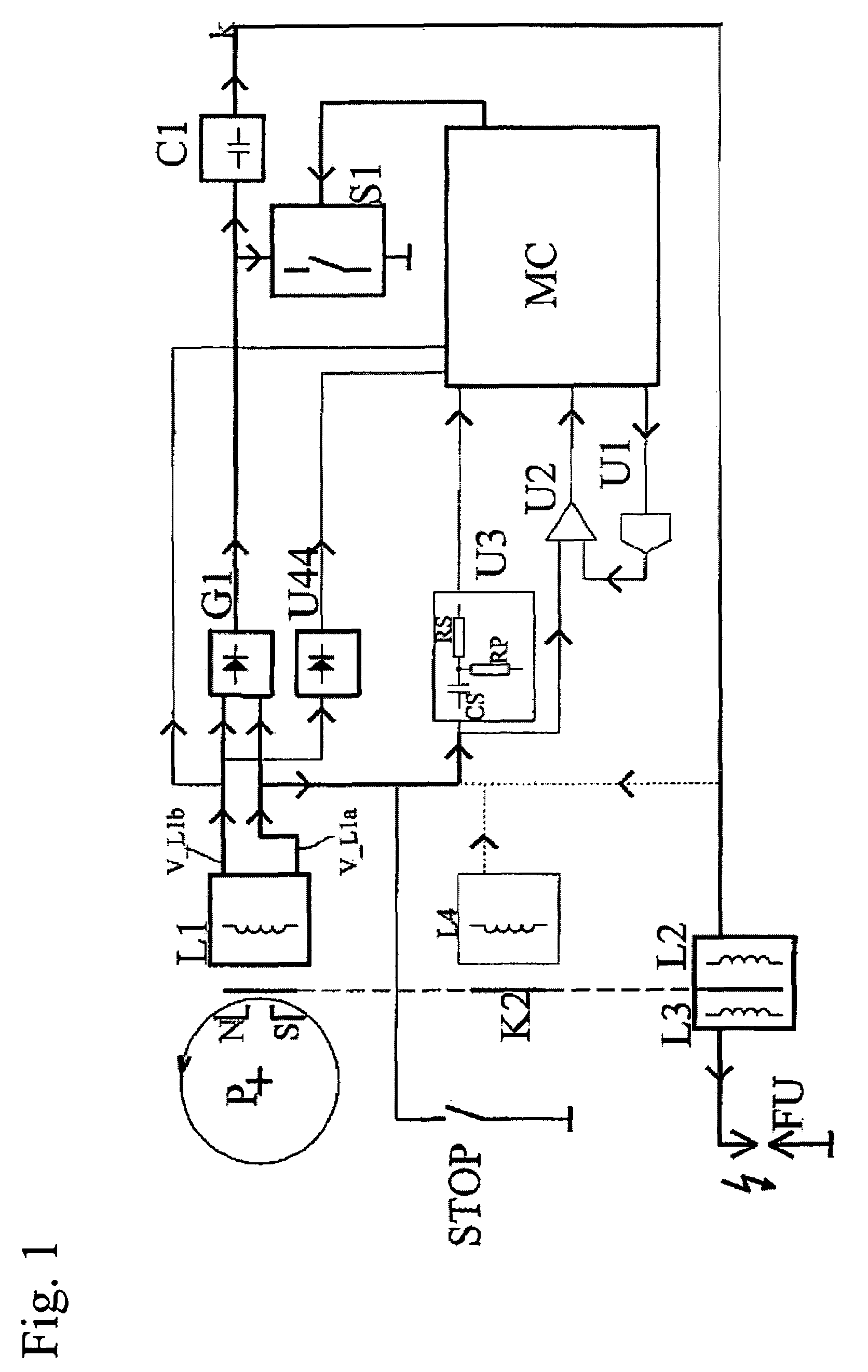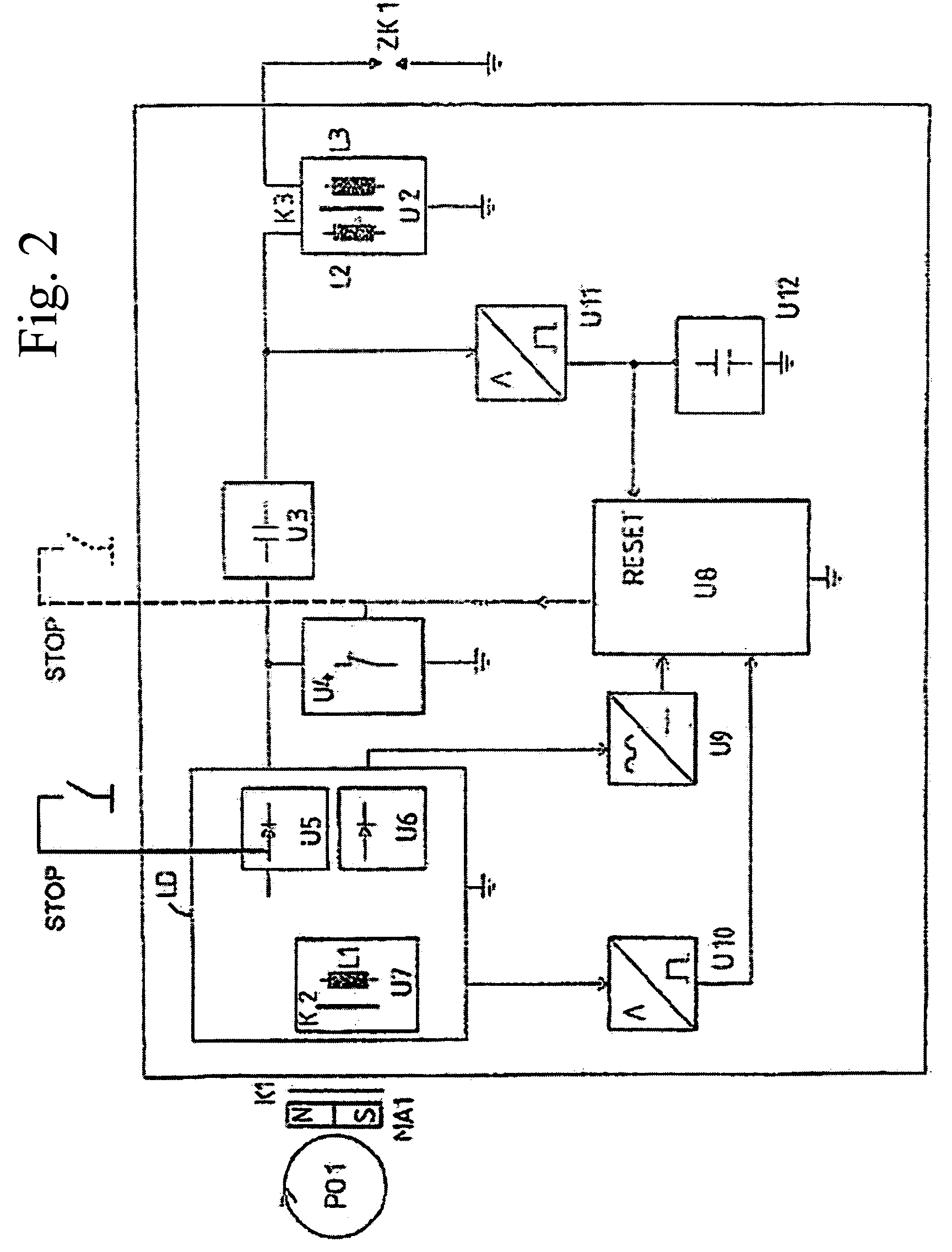Ignition method with stop switch for internal-combustion engines
a technology of internal combustion engine and stop switch, which is applied in the direction of engine ignition, contacts, other installations, etc., can solve the problems of incomplete failure no longer starting for a long time, and erroneous operation of internal combustion engine, so as to prevent ignition, prevent ignition, and prevent ignition
- Summary
- Abstract
- Description
- Claims
- Application Information
AI Technical Summary
Benefits of technology
Problems solved by technology
Method used
Image
Examples
Embodiment Construction
[0060]The block diagram in FIG. 1 is described up to the stop switch STOP in DE 102 01 422 A1, whose contents of disclosure are incorporated entirely in the present application by means of reference.
[0061]In a schematic representation, FIG. 1 shows a magnet wheel P with permanent magnets N, S in the top left region. During the operation of a motor, not shown, the magnet wheel rotates and induces a charging voltage V_L1 in a charging coil L1. The charging voltage is led via a bridge rectifier G1 to an ignition capacitor C1. The ignition capacitor C1 is used for storing ignition energy for generating an ignition spark and is charged up to a capacitor voltage.
[0062]The ignition capacitor C1 is discharged by closing a switch element S1, which is controlled by a programmable, electronic controller MC, for example, a microcontroller. After the switch element is closed, the ignition capacitor is discharged via a primary coil L2 of an ignition transformer L3, L2. Due to a winding ratio of t...
PUM
 Login to View More
Login to View More Abstract
Description
Claims
Application Information
 Login to View More
Login to View More - R&D
- Intellectual Property
- Life Sciences
- Materials
- Tech Scout
- Unparalleled Data Quality
- Higher Quality Content
- 60% Fewer Hallucinations
Browse by: Latest US Patents, China's latest patents, Technical Efficacy Thesaurus, Application Domain, Technology Topic, Popular Technical Reports.
© 2025 PatSnap. All rights reserved.Legal|Privacy policy|Modern Slavery Act Transparency Statement|Sitemap|About US| Contact US: help@patsnap.com



